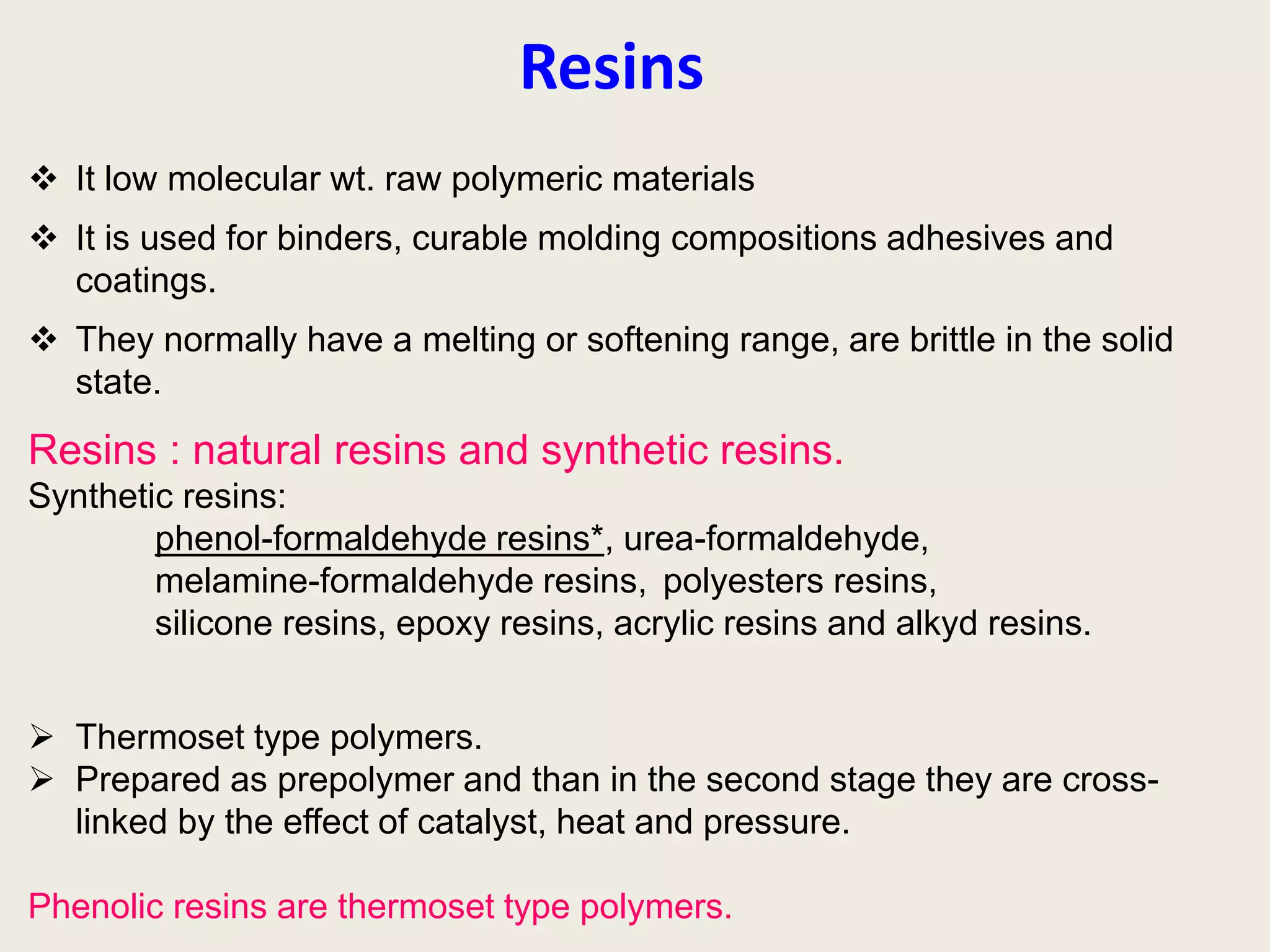This document provides information on phenolic resin adhesives and epoxy adhesives. It discusses that phenolic resins are thermoset polymers produced from reactions of phenol or substituted phenols with formaldehyde. They are used for applications like bonded abrasives, coated abrasives, and friction elements. The document also describes the synthesis and applications of epoxy resins, which include their reaction with hardeners, modifiers, fillers to produce one component or two component adhesives. Examples of formulations for general purpose, quick cure, and one component epoxy adhesives are also provided.






















